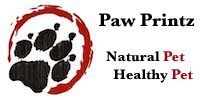At the onset of summer, a professional hydrobath, brush out and blowdry is often the answer.
It maybe a nuisance, but moulting is a natural process and most pets (as do humans) shed their hair as the seasons change – in spring and in autumn. Some breeds will shed all year round.
There is no such thing as a non-shedding dog. There is however dogs that shed little to no hair, such as poodles, who hardly seem to shed at all when properly groomed. And its not just the longhaired breeds, some short haired dogs can shed an amazing amount of hair, especially if they are ‘double coated’ breeds with an undercoat.
There are many grooming aids available on the market to suit all dog coats. For short, single coated breeds like Staffies, a rubber mitt or brush will help keep loose hair under control. Double coated dogs like Labradors and Heelers need a little more effort, a wire- bristled slicker brush and undercoat rake works well. A rubber mitt can also be used during bathing to work in shampoo and loosen hairs. Some breeds may need to be clipped and this can be done professionally or by yourself if you have the tools and the knowhow.
However, excessive moulting can be a problem. Allergies, central heating and early warm weather can all have an affect on a dog’s natural moulting cycle. If you pet is shedding uncontrollably and excessively during off-season, you may need to look at their diet. Poor nutrition and allergies are two of the most common causes of skin and coat problems and can lead to ailments such as dry, flaky or odorous skin, dull brittle coats and sores from frequent scratching and biting.
Research indicates that supplementing the diet with the Omega-6 nutrient will help to reduce excessive moulting and improve coat condition by replenishing the natural oil levels in the body. The Omega 6s are channelled into skin cell production and hair growth, where they are excreted
onto each hair, giving protection from heat and the outside elements.
Some Quick Tips:
- Help replenish the natural oil levels in the coat by adding a supplement to the diet. Oils protect the coat from heat and are necessary for healthy hair growth
- Brush your dog outdoors regularly, more during shedding periods such as the end of winter, to help remove dead hair.
- Invest in a good strong vacuum cleaner, there are ones on the market now specifically for pet hair.
- Create a ‘dog free’ zone (ie: bedrooms) especially helpful in household that have a person with allergies.
All shedding problems can be helped by regular grooming. If you think your animal is shedding excessively, take them to the vet. There maybe an underlying health issue such as nutrition, ringworm, thyroid imbalance or mange.

